Firesense LaserSCANNER VLS-300 Installation guide
- Category
- Fire protection
- Type
- Installation guide
This manual is also suitable for

V
V
E
E
S
S
D
D
A
A
LaserSCANNER
™
INSTALLATION MANUAL
VLS Models
VLS-200
VLS-204
VLS-214
VLS-300
VLS-304
VLS-314
VLS-600
VLS-700
October 2003
Version 1.2

Publication history
Release 1.2 October, 2003
Copyright Information
This document may not be reproduced, in whole or in part, by any means without the prior express
written permission of the copyright owner. Copyright 2003 Vision Fire & Security Pty Ltd
A.C.N. 008 009 514
Disclaimer
The manufacturer reserves the right to change designs or specifications without obligation and without
further notice. VESDA, LaserTEKNIC, LaserPLUS, LaserSCANNER, LaserCOMPACT, VESDAnet,
VESDAlink, ASPIRE, AutoLearn, VSM, VConfig, InfoWORKS, PROACTIV and PRECISION are
trademarks used under licence by the distributor.
Codes and Standards Information
Vision Products strongly recommends that this guide is read in conjunction with the appropriate local
codes and standards for smoke detection systems and electrical connections. This guide contains
generic information and some sections may not comply fully with all local codes and standards. In
these cases, the local codes and standards must take precedence.
FCC Compliance Statement
This equipment has been tested and found to comply with the limits for a Class B digital device,
pursuant to part 15 of the FCC Rules. These limits are designed to provide reasonable protection
against harmful interference in a residential installation. This equipment generates, uses and can
radiate radio frequency energy and, if not installed and used in accordance with the instruction, may
cause harmful interference to radio communications. However, there is no guarantee that interference
will not occur in a particular installation. If this equipment does cause harmful interference to radio or
television reception, the user is encouraged to try to correct the interference by one or more of the
following measures:
• Reorientate or relocate the receiving antenna
• Increase the separation between the equipment and receiver
• Connect the equipment to a power outlet which is on a different power circuit from which the
receiver is connected
• Consult the dealer or an experienced radio/television technician for help
FM 3611 Hazardous Approval Warning
Exposure of some chemicals may degrade the sealing of relays used on the detector. Relays used on
the detector are marked "TX2-5V" or "G6S-2-5V" or "EC2-5NU".
Approvals and Standards
The product complies with the following standards.
AS 1603.8 FCC Class B
AS/NZS 3548 AS2211
EN50081-1 21 CFR 1010.2
EN50130-4 21 CFR 1010.3
EN 60950
Safety Label
The LaserSCANNER incorporates a Laser device and is classified as a Class 1 Laser product that
complies with FDA Regulations 21 CFR 1040.10 and 1040.11. The laser is housed in a sealed
Detector chamber and contains no serviceable parts. This laser emits invisible light and can be
hazardous if viewed with the naked eye. Under no circumstances should the Detector Chamber
be opened. There is a safety label on the Detector Chamber as shown below.
Figure 1 The Laser Warning Label

Contents
1. Introduction.................................................................................................................... 2
2. Cabling Requirements .................................................................................................. 3
2.1Power Cables........................................................................................................................ 3
2.2Power Consumption ............................................................................................................. 3
2.3Data Cables.......................................................................................................................... 3
3. LaserSCANNER Specifications.................................................................................... 4
4. LaserSCANNER Dimensions........................................................................................ 5
5. Battery Backup Calculations........................................................................................ 7
6. Installation...................................................................................................................... 8
6.1Check Procedure Before Installation.................................................................................... 8
6.2Removal of Front Cover........................................................................................................ 9
Component Location inside Detector Enclosure ..................................................................... 10
6.4Display and Programmer Module Orientation .................................................................... 10
6.5Removal of Metal Knockout Holes for Cable Entry ............................................................ 11
6.6Exhaust Port Options.......................................................................................................... 11
6.7Securing the Mounting Bracket........................................................................................... 12
6.8Attaching the Detector onto the Bracket............................................................................. 12
6.9Connecting the Air Sampling Pipe...................................................................................... 13
6.10 Cabling Using Glands and Conduits ............................................................................. 13
6.10.1 Using Glands......................................................................................................... 13
6.10.2 Using Conduits ...................................................................................................... 13
6.11 Termination Card Details............................................................................................... 14
6.12 Procedure to Terminate Wires to the Termination Card ............................................... 14
6.13 Terminating the Power Wires to the Termination Card................................................. 15
6.14 Connecting the VESDAnet Wires to the Termination Card (If required)....................... 15
6.15 Terminating the Relay Wires to the Termination Card.................................................. 16
6.16 Closing Up the LaserSCANNER................................................................................... 18
6.17 Pipe Bonding Check...................................................................................................... 18
7. Power Up...................................................................................................................... 19
7.1Power Up the System......................................................................................................... 19
8. Preliminary System Checks ....................................................................................... 20
8.1Logging On to the System.................................................................................................. 20
8.2VESDAnet Communication Check ..................................................................................... 20
8.3Normalise the Air Flow and Clearing Air Flow Faults......................................................... 21
8.4Basic Pass/Fail Smoke Test............................................................................................... 22
9. Installation Checklist................................................................................................... 23
10. VESDA Product Warranty Conditions....................................................................... 24

LaserSCANNER Installation Manual VESDA
®
2 Version 1.2
1. Introduction
Scope of this Manual
This manual is intended for installation technicians to be able to install, perform basic power and
preliminary device checks for the LaserSCANNER detector. It does not cover information for
commissioning. All VESDA equipment is to be commissioned by personnel who have attended
a VESDA accreditation course.
Use the checklist in Section 9 to verify that the installation has been correctly completed. Fill out
the details in the checklist sheet for the site and submit it to the appropriate personnel.
CAUTION
• The Detector must only be installed by VESDA accredited personnel.
• The performance of the system depends on the pipe network designed for the site.
Any alteration to the pipe network may alter the performance of the system. The
ASPIRE™ design tool is to be used to verify the suitability of any pipe network design
and subsequent alterations. ASPIRE™ is available from your distributor or local
Vision office.
• The IP rating for the LaserSCANNER is IP 30. This rating indicates the device is not to
be installed where there is the possibility of any water or liquid falling onto the
device.
WARNING
• It is strongly recommended that the mounting bracket be used during installation.
• The chassis assembly and Central Processor Card should NOT TO BE REMOVED or
disassembled during installation.
• Follow the installation procedure outlined in this manual.

VESDA
®
LaserSCANNER Installation Manual
Version 1.2 3
2. Cabling Requirements
The terminals on the termination card in the LaserSCANNER will accept wire sizes up to 2.5sq
mm (12 AWG).
2.1 Power Cables
Use the power ratings for the detector and the modules to determine the required wire sizes.
Refer to the table below for power ratings.
2.2 Power Consumption
The power requirements for the detector to operate are as follows:-
Operating voltage: 18VDC to 30VDC
Power Consumption (W)
@ 24VDC
Current Consumption (mA)
@ 24VDC
Quiescent With Alarm Quiescent With Alarm
LaserSCANNER with
Blank Plates @ 3000rpm
5.8 7.4 240 310
LaserSCANNER with
Blank Plates @ 3500rpm
6.7 8.4 280 350
LaserSCANNER with
Blank Plates @ 4000rpm
8.4 10.1 350 420
LaserSCANNER with
Blank Plates @ 4200rpm
9.6 11.3 400 470
Programmer Module
0.6
(Backlight Off)
2.2
(Backlight On)
20
(Backlight Off)
80
(Backlight On)
Display Module Only
1.6 2.2 60 80
Table 1 Power and Current Consumption for LaserSCANNER Detector and Modules
2.3 Data Cables
The recommended RS 485 data cable for interconnecting to other detector units on the
VESDAnet loop is Belden 9841 (or equivalent). The cable characteristics are as follows:-
• 24 AWG, Twisted pair, Shielded, 120 ohms impedance
The maximum specified length for the RS485 cable between any two devices on VESDAnet is
1300m (4000ft).

LaserSCANNER Installation Manual VESDA
®
4 Version 1.2
3. LaserSCANNER Specifications
Supply Voltage
18 to 30VDC
Power Consumption
See table 1, page 2
Dimensions (WHD)
350mm x 225mm x 125mm (13.8in x 8.9in x 4.9in)
Weight
4.0kg (9lbs) including Display and Programmer module
Operating Temperature
Detector Ambient: 0
°
to 39
°
C (32
°
F to 103
°
F)
Sampled Air: -20
°
to 60
°
C (-4
°
to 140
°
F)
Humidity: 10-95% RH, non-condensing
Sampling Pipe Network
Aggregate pipe length: 200m (650ft)
Pipe Modelling Design Tool: ASPIRE™
Pipe Size
Internal Diameter: 15-21mm (9/16 – 7/8in)
External Diameter: 25mm (1in)
(25mm to 1inch adaptor supplied for USA market)
Relays
7 or 12 Relays option. Contacts rated 2A @ 30VDC.
Programmable to energised or de-energised states.
Scan Sector Delay
Min 8 seconds, max 15 seconds
Scan Threshold Delay
Min 0 seconds, max 10 seconds
Relays Default
Configuration
7 Relays:
12 Relays:
Alert, Action, Fire 1, Fire 2, Maintenance, Urgent
Fault and Isolate. (7 x NO/NC contacts)
Alert, Action, Fire 1, Fire 2, Maintenance, Urgent
Fault and Isolate, First Alarm Sector 1 to 4 and
Scan. (10 x NO, 2 x NO/NC contacts)
IP Rating
IP30
Cable Access
8 x 25mm (1in) knockouts in various positions.
Cable Termination
Screw terminal blocks (0.2-2.5sq mm, 30-12 AWG)
Sensitivity Range
0.005 to 20.00% obs/m
(0.0015 to 6.25% obs/ft)
Threshold Setting Range
Alert: 0.005 – 1.990% obs/m
(0.0015 - 0.6218% obs/ft)
Action: 0.010 – 1.995% obs/m
(0.0031 - 0.6234% obs/ft)
Fire 1: 0.015 – 2.00% obs/m
(0.0046 – 0.625% obs/ft)
Fire 2: 0.020 – 20% obs/m
(0.0062 – 6.25% obs/ft)**
** Limited to 12% obs/m (4% obs/ft) in UL mode
Key Software Features
Event log: Up to 18,000 events stored on FIFO basis.
AutoLearn: Minimum 15 minutes.
Maximum 15 days, 23hrs, 59 minutes.
Recommended minimum period 14 days.
During AutoLearn thresholds are NOT changed from
pre-set values.
Referencing: Compensation for external ambient conditions.
Four Alarm Levels per Sector: Alert, Action, Fire 1 and Fire 2.
Two Fault Warning Levels: Maintenance and Urgent fault.
Maintenance Aids: Filter and flow monitoring.
Event reporting via VESDAnet or event log.
Auto Scan and Thresholds Setting: Detector selects the
appropriate scan threshold automatically.

VESDA
®
LaserSCANNER Installation Manual
Version 1.2 5
4. LaserSCANNER Dimensions
CE = Cable Entry Ports (25.4mm, 1.0in ∅
∅∅
∅)
EP = Exhaust Air Port
Figure 1 Dimensions in mm (in) of LaserSCANNER with Mounting Bracket
(Rear View, Normal Orientation)
Note: Remove the centre pages of this manual for installation template. We strongly
recommend the use of this mounting bracket.
51.0
(2.0)
35.0
(1.37)
21.0
(0.83)
CE
350 (13.8)
209 (8.24)
EP
77.5
(3.05)
12.0
(0.47)
207 (8.15)
28.5
(1.12)
Mounting
Bracket
Bridge and
Lance
225
(8.9)
200
(7.87)
319
(12.56)

LaserSCANNER Installation Manual VESDA
®
6 Version 1.2
CE = Cable Entry Port (25.4mm, 1.0in ∅
∅∅
∅)
CP = Exhaust Pipe Outlet Option or Cable Entry Port
Figure 2 Dimensions in mm (in) for the LaserSCANNER
26.0(1.02)
34
(1.33)
26.0
(1.02)
350(13.8)
35
(1.37)
45.0
(1.77)
34
(1.33)
34
(1.33)
34.0
(1.33)
Inlet Air Ports
CE
TOP VIEW
RIGHT HAND
SIDE VIEW
LEFT HAND
SIDE VIEW
FRONT VIEW
28.5
(1.12)
CP
CE
225
(8.9)
26.0
(1.02)
25.4
(
1.0
)
125 (4.9)
BOTTOM VIEW
141.4 (5.58)
26.0
(1.02)
CE
Exhaust Air
Port
35
(
1.37
)
45.0
(1.77)
20.2
(0.88)

VESDA
®
LaserSCANNER Installation Manual
Version 1.2 7
5. Battery Backup Calculations
The nominal supply voltage is 24 VDC. Use Table 2 to calculate and to determine the battery
backup requirements for your VESDA system. Refer to Table 1, page 3 for power consumption
details.
NORMAL LOAD @ 24 V DC FULL ALARM LOAD @ 24 VDC
EQUIPMENT LOAD
(mA)
QTY TOTAL
(ma)
LOAD
(mA)
QTY TOTAL
(ma)
LaserSCANNER
(No display &
programmer)
Display Module
Programmer Module
Remote Display
Other 24V loads
TOTAL (mA)
TOTAL (mA)
X
X
STANDBY HOURS
ALARM HOURS
=
X 1.06
STANDBY CAPACITY
(mAHr)
ALARM CAPACITY
(mAHr)
TOTAL CAPACITY =
STANDBY + ALARM
(mAHr)
DIVIDE BY 1000
MULTIPLY BY BATTERY
FACTOR 1.25
AHr
Table 2 Calculations to Determine the Battery Backup Requirements

LaserSCANNER Installation Manual VESDA
®
8 Version 1.2
6. Installation
6.1 Check Procedure Before Installation
(a) Do not install your LaserSCANNER if there are any signs of shipping damage to the
product. Inform your distributor if there is any damage.
(b) Check the model of the LaserSCANNER is correct as per the design specifications for the
site. Refer to the model number located on the product and approvals label attached at the
bottom of the detector.
(c) Identify the location where the detector is to be mounted. The LaserSCANNER can be
mounted on a wall or a suitable secure surface. There are two allowable mounting positions
for the LaserSCANNER as shown in Figure 3.
• Normal Orientation: Mounting the detector with the inlet air ports on the top right
hand side of the box and the exhaust air port at the bottom.
• Inverted Orientation: Mounting the detector with the inlet air ports at the bottom
left hand side of the box and the exhaust air port on the top.
(d) Verify that the selected mounting location is suitable to fit the detector by test fitting the
LaserSCANNER onto the actual mounting position or use the drilling template supplied with
this manual. Ensure there is 150mm of clear space around the air inlet, exhaust and cable
entry ports to allow for pipe and cable entry.
(e) Verify that the cable entry points and the sampling air pipes are at its correct locations.
(f) Determine the type of fasteners required for attaching the mounting bracket onto the
mounting surface. The size of the mounting holes on the mounting bracket is 6mm
(15/64in).
Note: For LaserSCANNER detectors mounted in the Inverted Orientation position, the
display and/or programmer modules have to be rotated 180°
°°
°. Refer to Section 6.4
for procedure to rotate the modules. The position of the Programmer and Display
modules can be interchanged.
Figure 3 LaserSCANNER Orientation, Normal (left), Inverted (right)
Inlet Air Ports
Cable Entry
Ports
Cable
Entry
Ports
Aspirator
B
D
P
B
P
D
Exhaust Air
Ports
Cable Entry
Ports
Cable Entry
Ports
B=Blank Plate
P=Programmer Module**
D=Display Module**
**The location of the Programmer and Display
modules depends on the model of your VLS
Detector.

VESDA
®
LaserSCANNER Installation Manual
Version 1.2 9
6.2 Removal of Front Cover
(a) Insert a 4mm x 1mm flat blade screwdriver (A) into notch. Refer to Figure 4.
(b) Gently open the blank plate (B) with the screwdriver.
(c) Lift out the two screw covers (C) with a flat blade screwdriver.
(d) Use a Philips head screwdriver and remove the four retaining screws (D). Screws are
captive and are retained within the front cover. Refer to Figure 4.
(e) When the front cover is opened, there are two plastic straps joining the cover to the
enclosure.
(f) If the front cover is to be separated from the enclosure do the following:-
i) On the rear of the front cover or on the enclosure side, twist the plastic strap 90° and
slip strap out through slot.
ii) Locate the cable loom that connects the central processor card to the back of a display
or programmer module that is located on the front cover. On the back of the
programmer or display module, disconnect this cable connector from its socket
(labelled Term) if present.
Note: Mark this connector and socket before removing if you are unsure of the
wiring.
Figure 4 Removing the Blank Plate, Screw Covers, Retaining Screws, Programmer and Display
Modules.
Termination Card
Screws (D)
Screws (D)
Display, Programmer or
Blank Plate Location
(
A
)
Blank Plate (B)
(C)
(E)

LaserSCANNER Installation Manual VESDA
®
10 Version 1.2
6.3 Component Location inside Detector Enclosure
Figure 5 Components inside Detector Enclosure
6.4 Display and Programmer Module Orientation
The detector is shipped from the factory with the display, programmer and/or blank plates
positioned in the normal orientation. Refer to Figure 3. If the detector is to be mounted in the
inverted orientation, perform the following steps to rotate the modules.
(a) Remove the front cover as per Section 6.2.
(b) Locate the cable loom that connects the Central Processor Card to the display or
programmer module located on the font cover. Remove this cable connector from its socket
(labelled Term).
(c) Insert a 4mm wide x 1mm flat blade screwdriver into gap between module and front cover
(E). Refer to Figure 4.
(d) Gently lever screwdriver to lift out modules.
(e) Rotate modules 180° and gently re-insert into the same compartment until modules are
flush with the front cover. Refer to Figure 3 for orientation. Ensure the metal fingers are
located on the exterior of the Display/Programmer.
(f) Re-connect the cable loom to the socket (labelled Term) on the display or programmer
module. Refer to Figure 6 below for cable termination diagram.
Figure 6 Cable Terminations between Modules and Central Processor Card
X1
X2
TERM
EXP
11
X1
TERM
X2
EXP
Programmer
Module
Display
Module
EXPANSION
11
Central Processor Card
To Next
Module
Aspirator
Laser Detector
Chamber
Air Filter Cartridge
VESDAnet
socket
Termination Card
(7 Relays)
or optional
12 Relays Card
Wire Terminal Strips
CPU Card
(Under Backing Sheet)
VESDAnet
Number
FOK LED
Connector

VESDA
®
LaserSCANNER Installation Manual
Version 1.2 11
6.5 Removal of Metal Knockout Holes for Cable Entry
(a) Determine the cable entry holes to be used. Refer to Figure 7.
(b) Using the ball end of a small hammer, gently tap onto the required knockout holes to break
away the metal pieces.
OR
Punch out the knockout holes with the blade of a screwdriver or a punch tool.
6.6 Exhaust Port Options
There are three exhaust air outlet positions (Bottom, Rear and Left Side) located on the exhaust
air manifold. Refer to Figure 7. Any of these outlets may be used to vent the air into the
atmosphere or back to the fire zone. Select an appropriate exhaust outlet to suit the site
condition and remove the appropriate plug with a screwdriver.
If the side exhaust is to be used perform the following:-
(a) Punch out the knockout hole located on the left side of the enclosure with the ball end of a
small hammer or a screwdriver (A).
(b) To remove the plug (B), insert a screwdriver into the slot on the plug and turn.
(c) Run a 25mm (1in) pipe through the side hole and insert the pipe into the exhaust port
ensuring there is a firm fit.
(d) Do not glue this pipe to the exhaust port.
Caution: Do not remove the plug located at outlet (B) if there is no pipe attached to this
outlet.
Figure 7 Exhaust Port Options and location of Cable Entry Ports
Cable Entry Ports
(Two on Rear)
Cable Entry Ports
(May be used for
Exhaust Air Pipe)
Side Exhaust
Air Outlet (B)
(Plug not shown)
(A)
Bottom Exhaust
Air Outlet
(One Outlet on Rear)
Air Inlet Port 1
Air Inlet Port 4
Air Inlet Port 2
Air Inlet Port 3

LaserSCANNER Installation Manual VESDA
®
12 Version 1.2
6.7 Securing the Mounting Bracket
Warning: Make sure that there are no electrical wires or plumbing behind the mounting
position before drilling. Ensure the mounting position is flat.
a) Remove the drilling template from the centre page of this manual.
b) Determine the orientation for the detector (Normal or Inverted Orientation). Place the drilling
template onto its mounting location in the correct orientation and drill out the appropriate
holes. Refer to the drilling template for orientation.
c) Use the appropriate fasteners to suit the mounting surface. Secure the bracket to the
surface.
6.8 Attaching the Detector onto the Bracket
(a) Determine the required orientation for the LaserSCANNER. Refer to Figure 3 for orientation.
(b) Place the three bridges located on the rear of the detector onto the three lances located on
the mounting bracket. Refer to Figure 8.
(c) Push the detector downwards until it locks onto the lances and engages the fitting dimples.
(d) Check the unit does not slip off its bracket.
(e) To remove, push the detector upwards and pull away from wall.
(f) To prevent unwanted removal of the detector, insert screw into the keyhole slot at location
shown on template and tighten screw. Drill out these holes before mounting the detector
onto its mounting bracket by using the supplied template to locate the screw hole position.
Insert at least one screw into one key hole slot located around the Termination Card area.
Figure 8 Mounting the Detector onto the Mounting Bracket
Mounting Bracket
Rear of Detector
Bridge
Lance
Fitting Dimples

VESDA
®
LaserSCANNER Installation Manual
Version 1.2 13
6.9 Connecting the Air Sampling Pipe
The air inlet ports are designed to fit a standard pipe of 25mm (1in) OD. A tapering of the air
inlet ports prevent the pipes from being inserted beyond 15mm (5/8in).
Any of the four inlet ports may be used. Ensure that the correct pipes in use are selected when
programming the detector.
Note: There must be a length of 500mm (19.6in) of straight pipes before terminating the
pipes at the air inlet ports of the detector.
Note: When using a ¾ inch pipe which has a 1 1/16 inch OD, use the adaptor supplied
with the LaserSCANNER to connect the pipes to the inlet manifold.
a) De-burr and square off the end of the sampling air pipes. Ensure the pipes are free from
swarf.
b) Remove the plugs from the inlet and exhaust ports. Do not remove the plugs from the
inlet ports if the ports are not used.
c) Insert the pipes into the inlet and/or exhaust ports ensuring a firm fit. DO NOT glue these
pipe connections.
d) Pipe the exhaust air where necessary.
Caution: DO NOT GLUE THE AIR INLET AND EXHAUST PIPE CONNECTIONS.
Glued connections make disconnecting the sampling air pipes from the
LaserSCANNER extremely difficult during maintenance and will result in
damage to the equipment.
6.10 Cabling Using Glands and Conduits
6.10.1 Using Glands
(a) If using cable glands, use the correct gland size to fit into the 25mm (1in)∅ cable entry port.
(b) Run the wires through the glands and into the LaserSCANNER enclosure. Use your local
codes and electrical standards for cabling.
6.10.2 Using Conduits
(a) Terminate the conduits at the cable entry ports on the sides of the box using the appropriate
conduit connectors.
(b) Run the wires through the conduits and into the LaserSCANNER enclosure. Use your local
codes and electrical standards for cabling.

LaserSCANNER Installation Manual VESDA
®
14 Version 1.2
6.11 Termination Card Details
Figure 9 Termination Card Details for 7 Relays
Figure 10 Termination Card Details for 12 Relays
6.12 Procedure to Terminate Wires to the Termination Card
Use the appropriate local wiring standards or use the following suggested procedure listed
below. Check Sections 6.13, 6.14 and 6.15 for specific information on terminal connections.
(a) Strip off 5 to 7mm (0.2 to 0.3in) of outer insulation from each wire.
(b) For multi-stranded wire only - Twist wire strands together.
Terminal A Terminal B Terminal C
Pin 1
Pin 11
Pin 1 Pin 1
Pin 10
Pin 12
VESDAnet
Socket
Terminal A
Terminal B
Terminal C
1 VESDAnet A+ 1 Isolate (NO) 1 Fire 2 (NC)
2 VESDAnet A- 2 Isolate (C) 2 Fire 2 (C)
3 Shield 3 Isolate (NC) 3 Fire 2 (NO)
4 VESDAnet B+ 4 Minor Fault (NO) 4 Fire 1 (NC)
5 VESDAnet B- 5 Minor Fault (C) 5 Fire 1 (C)
6 Shield 6 Minor Fault (NC) 6 Fire 1 (NO)
7 Power (+) 7 Urgent Fault (NO) 7 Action (NC)
8 Power (-) 8 Urgent Fault (C) 8 Action (C)
9 Power (+) 9 Urgent Fault (NC) 9 Action (NO)
10 Power (-) 10 Alert (NO) 10 GPI -
11 Alert (C) 11 GPI +
12 Alert (NC)
GPI = General Purpose Input
FOK LED
Connector
Terminal A
Terminal B
Terminal C
1 VESDAnet A+ 1 Urgent Fault (NO) 1 Fire 1 (NO)
2 VESDAnet A- 2 Urgent Fault (C) 2 Fire 1 (C)
3 Shield 3 Urgent Fault (NC) 3 Fire 1 (NC)
4 VESDAnet B+ 4 Relay 1 (NO) 4 Relay 12 (NO)
5 VESDAnet B- 5 Relay 1 (C) 5 Relay 12 (C)
6 Shield 6 Relay 2 (NO) 6 Relay 11 (NO)
7 Power (+) 7 Relay 2 (C) 7 Relay 11 (C)
8 Power (-) 8 Relay 4 (NO) 8 Relay 10 (NO)
9 Power (+) 9 Relay 4 (C) 9 Relay 10 (C)
10 Power (-) 10 Relay 5 (NO) 10 Relay 9 (NO)
11 Relay 5 (C) 11 Relay 9 (C)
12 Relay 7 (NO) 12 Relay 8 (NO)
13 Relay 7 (C) 13 Relay 8 (C)
14 GPI -
15 GPI +
Terminal A Terminal B Terminal C
Pin 1 Pin 1
Pin 1
Pin 10
Pin 13
Pin 15
VESDAnet
Socket
GPI = General Purpose Input
FOK LED
Connector

VESDA
®
LaserSCANNER Installation Manual
Version 1.2 15
(c) On the termination card, remove the plugs from its terminal sockets.
(d) Insert the correct wires into the terminal plugs.
(e) Tighten terminal plug screw.
(f) Repeat steps (c) to (e) as required.
(g) Insert plugs into the correct sockets on the termination card.
(h) Check the wires are attached to its terminals.
(i) Ensure no bare wires are exposed at the terminals. The wire insulation must touch the
terminal plugs at the pin connection opening.
(j) Check the terminations are correct by referring to the appropriate circuit diagrams in
Sections 6.13, 6.14 and 6.15.
6.13 Terminating the Power Wires to the Termination Card
a) Refer to Figure 9 or 10 for the location of the power terminals on the termination card.
b) Connect the power wires to the Power terminals as shown in Figure 11.
Figure 11 Wire Connection Details for Power
6.14 Connecting the VESDAnet Wires to the Termination Card (If required)
a) Refer to Figure 9 or 10 for the VESDAnet terminal location on the termination card.
b) Connect the VESDAnet wires as shown in Figure 12. This diagram is only an example for
five detectors. This wiring method is similar for two or more detectors.
c) Maintain the wiring polarity throughout the network. Do not leave any VESDAnet
terminals unconnected.
NOTE: The detector is shipped from the factory with the VESDAnet terminals linked as shown
in Figure 13. If the detector is not to be used in a VESDAnet loop and is to be used as a
stand-alone detector the VESDAnet terminals must be wired as per Figure 13.
NOTE: It is strongly recommended that the Closed Loop configuration shown in Figure 12 is
installed, to achieve a redundant fault tolerant loop. An Open Loop configuration is
possible by not linking the VESDAnet wires between detector 1 and detector 5. Detector
1 and detector 5 must be programmed to the Opened Loop Configuration.
½ Terminal A
Power (-)
Power
(
-
)
Power (+)
Power (+)
GND
8
9
10
7
+24V
GND
From 24V
Power
Supply
+24V
24V Power to
Next Device

LaserSCANNER Installation Manual VESDA
®
16 Version 1.2
Figure 12 Wire Connection Details for VESDAnet (Closed Loop)
Figure 13 Wire Connection Details for VESDAnet Loop (Stand Alone Set Up)
6.15 Terminating the Relay Wires to the Termination Card
a) Refer to Figure 9 or 10 for the relay terminals location on the termination card.
b) Connect the relay wires to the terminals as per Figure 14 and your site requirements.
Detector 3
½ Terminal A
1
2
3
4
5
6
1
2
3
4
5
6
1
2
3
4
5
6
1
2
3
4
5
6
1
2
3
4
5
6
Shield
A
-
A
+
Shield
B-
B+
Detector 1
½ Terminal A
Detector 2
½ Terminal A
Detector 4
½ Terminal A
Shield
B+
B-
Shield
A
-
A
+
Shield
A
-
A
+
B-
Shield
Shield
B-
B+
Shield
Shield
A
-
A
+
B-
B+
Detector 5
½ Terminal A
B+
Shield
A
-
A
+
B+
6
5
4
2
3
1
Shield
A
-
A
+
Shield
B-
½ Terminal A

VESDA
®
LaserSCANNER Installation Manual
Version 1.2 17
Figure 14 Wire Termination Details for 7 and 12 Relays
NO
GPI
11
10
GPI+
C
GPI-
9
8
Terminal C
7
6
5
4
3
NO
NC
NC
NO
C
2
1
C
NC
Fire 2
(Relay 7)
Fire 1
(Relay 6)
Action
(Relay 5)
}
}
}
}
Terminal Pins location for 7 Relays (Default Relay Assignments)
Isolate
(
Rela
y
1
)
Terminal B
Alert
(Relay 4)
12
11
10
NC
C
C
NO
9
8
7
6
5
4
3
NC
NO
NO
NC
C
2
1
C
NO
Minor Fault
(Relay 2)
Urgent Fault
(Relay 3)
}
}
}
}
NC
Terminal Pins location for 12 Relays (Default Relay Assignments)
Minor Fault
(Relay 2)
Terminal B
C
Alert
(Relay 4)
11
10
C
NO
NO
9
8
7
6
5
4
3
NO
NO
C
NC
C
2
1
C
NO
Urgent Fault
(Relay 3)
Isolate
(Relay 1)
}
}
12
NO
}
}
}
}
Action
(Relay 5)
Fire 2
(Relay 7)
13
C
Terminal C
First Alarm Sector 4
(Relay 11)
Scan
(Relay 12)
7
6
5
4
3
NO
NO
C
NC
C
2
1
C
NO
Fire 1
(Relay 6)
}
}
C
First Alarm Sector 2
(Relay 9)
11
10
C
NO
NO
9
8
}
}
C
GPI
15
14
GPI+
NO
GPI-
13
12
}
}
First Alarm Sector 3
(Relay 10)
First Alarm Sector 1
(Relay 8)
}

LaserSCANNER Installation Manual VESDA
®
18 Version 1.2
6.16 Closing Up the LaserSCANNER
a) Tie all wires together into neat looms using cable ties.
b) If the front cover was removed do the following:-
i) Reattach the plastic straps to the front cover.
ii) Re-connect the removed cable loom to the Term socket located on the rear of the
display or programmer module.
c) Perform the power up as per section 7 and preliminary checks as per section 8.
d) Close up the LaserSCANNER and secure the cover with the four screws.
e) Re-attach the blank plate and screw covers to its location.
6.17 Pipe Bonding Check
(a) Check all the pipe joints are fully sealed and bonded to eliminate unwanted air leaks.
(b) Check the pipe joints at the air inlet ports of the LaserSCANNER ARE NOT bonded and the
pipe fits firmly into the air inlet socket.
(c) Check all pipes are securely attached to a mounting surface with the proper fasteners.
(d) Check the number and sizes of the sampling air holes on the pipes are correct.
(e) Check the routing of the pipes is correct with reference to the site plan.
Page is loading ...
Page is loading ...
Page is loading ...
Page is loading ...
Page is loading ...
Page is loading ...
Page is loading ...
-
 1
1
-
 2
2
-
 3
3
-
 4
4
-
 5
5
-
 6
6
-
 7
7
-
 8
8
-
 9
9
-
 10
10
-
 11
11
-
 12
12
-
 13
13
-
 14
14
-
 15
15
-
 16
16
-
 17
17
-
 18
18
-
 19
19
-
 20
20
-
 21
21
-
 22
22
-
 23
23
-
 24
24
-
 25
25
-
 26
26
-
 27
27
Firesense LaserSCANNER VLS-300 Installation guide
- Category
- Fire protection
- Type
- Installation guide
- This manual is also suitable for
Ask a question and I''ll find the answer in the document
Finding information in a document is now easier with AI
Related papers
-
 Xtralis VESDA VLS User manual
Xtralis VESDA VLS User manual
-
 Firesense VESDA VLC User guide
Firesense VESDA VLC User guide
-
Firesense VESDA VLP User manual
-
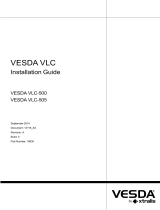 Xtralis VESDA VLC-505 Installation guide
Xtralis VESDA VLC-505 Installation guide
-
Notifier VESDA VLI Owner's manual
-
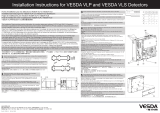 Xtralis VESDA VLP VL Installation guide
Xtralis VESDA VLP VL Installation guide
-
 Firesense VESDA-E VEU-A00 User guide
Firesense VESDA-E VEU-A00 User guide
-
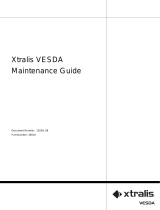 Firesense VESDA SDM Maintenance User guide
Firesense VESDA SDM Maintenance User guide
-
 Firesense VESDA-E VES-A10-P User guide
Firesense VESDA-E VES-A10-P User guide
-
Firesense VESDA-E VES-A00-P User guide
Other documents
-
 Xtralis VESDA Laser Industrial Aspirating Smoke Detector User manual
Xtralis VESDA Laser Industrial Aspirating Smoke Detector User manual
-
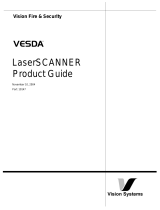 VESDA VLS-XXX User manual
VESDA VLS-XXX User manual
-
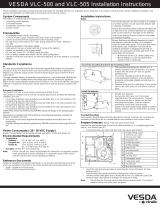 VESDA lasercompact VLC-505 Installation guide
VESDA lasercompact VLC-505 Installation guide
-
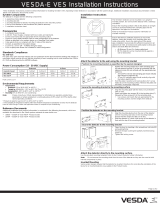 Xtralis VESDA-E VES Series Installation guide
Xtralis VESDA-E VES Series Installation guide
-
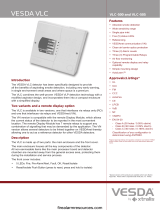 VESDA VLC-500 and VLC-505 LaserCOMPACT User manual
VESDA VLC-500 and VLC-505 LaserCOMPACT User manual
-
VESDA VLP User manual
-
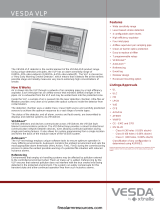 VESDA VLP LaserPlus Aspirating Smoke Detector Owner's manual
VESDA VLP LaserPlus Aspirating Smoke Detector Owner's manual
-
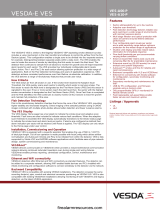 VESDA VES-A00-P, VES-A10-P Thermostick Elettrotecnica User guide
VESDA VES-A00-P, VES-A10-P Thermostick Elettrotecnica User guide
-
Zeta LASD2 User manual
-
Zeta LASD2 User manual








































